ABCDEFGH is a hollow cube made of an insulator (figure) face ABCD has positive charge on it. Inside the cube, we have ionised hydrogen.
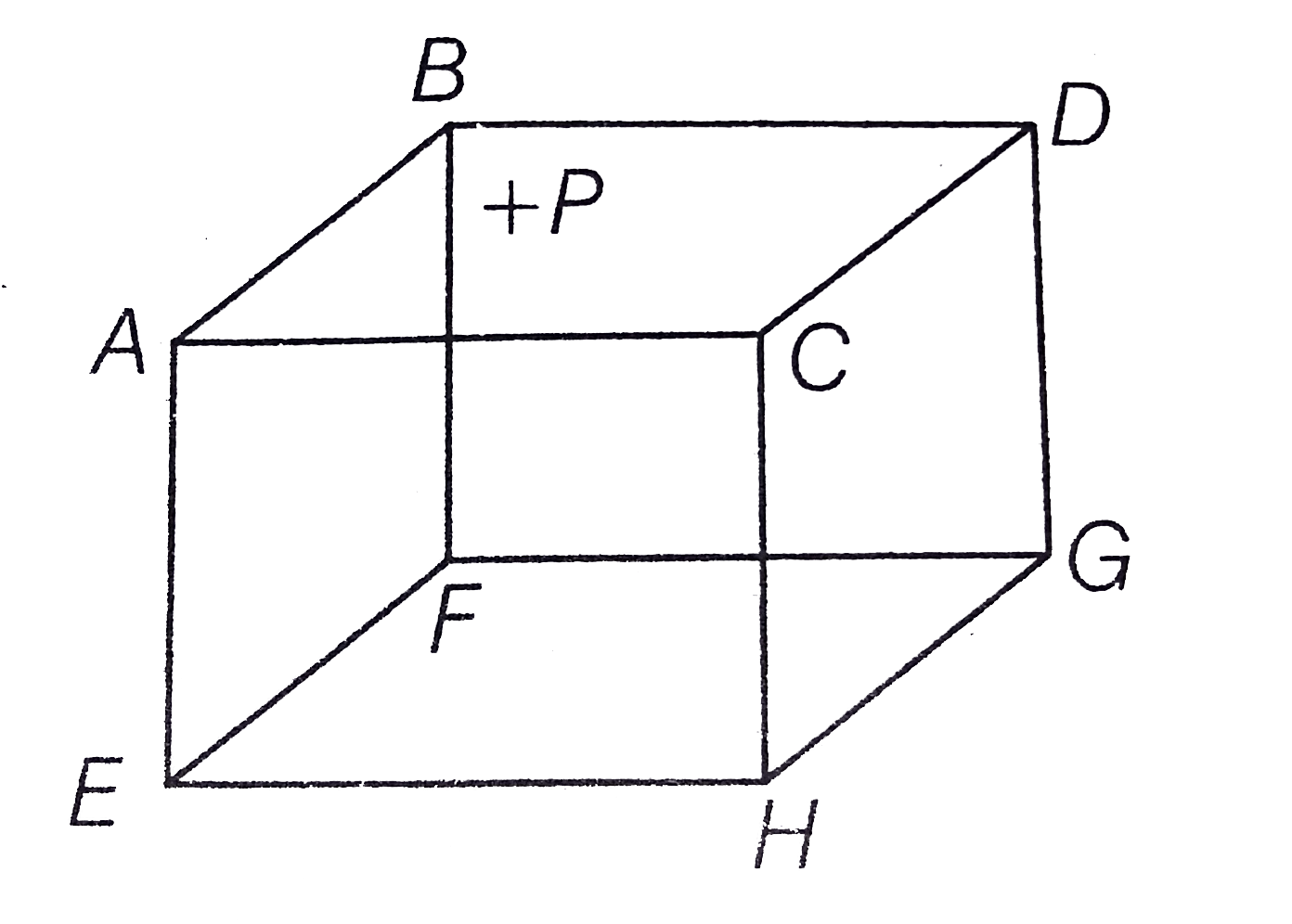
will be valid
will not be valid, since the ions would experience forece other than due to collisions with the walls.
will not be valid since collisions with would not be elastic
will not be valid because isotropy is lost
The correct Answer is:2 and 4
Due to presence of external positive charge on the face ABCD. The usual expression for pressure on the basis of kinetic theory will not be valid as ions would also experience electrostatic forces other than the forces due to collisions with the walls of the container. Due to pressence of positive charge the isotropy is also lost.
Topper's Solved these Questions
Similar Questions
Consider a solid cube made up of insulating material having a uniform volume charge density. Assuming the electrostatic potential to be zero at infinity, the ratio of the potential at a corner of the cube to that at the centre will be
View SolutionA square frame ABCD is made of insulated wires and there is a short dipole, with dipole moment p, fixed in the plane of he figure. The dipole is lying at the centre of the square, making an angle θ, as shown in the figure. If four point charges are placed at the four point charges are placed at the four corners of the square, then the magnitude of force exerted by the dipole on the system of charges is
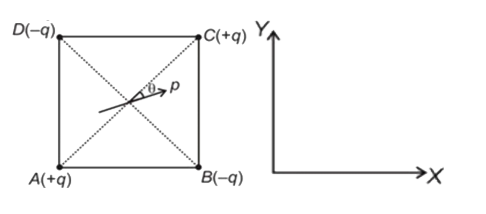 View Solution
View Solution
Knowledge Check
- Question 1 - Select One
A short electric dipole (which consists of two point charges, + q and -9) is placed at the centre o and inside a large cube (ABCDEFGH) of length L, as shown in figure below. The electric flux, emanating through the cube is :
 Aq/4πε0LBZeroCq/2πε0LDq/3πε0L
Aq/4πε0LBZeroCq/2πε0LDq/3πε0L
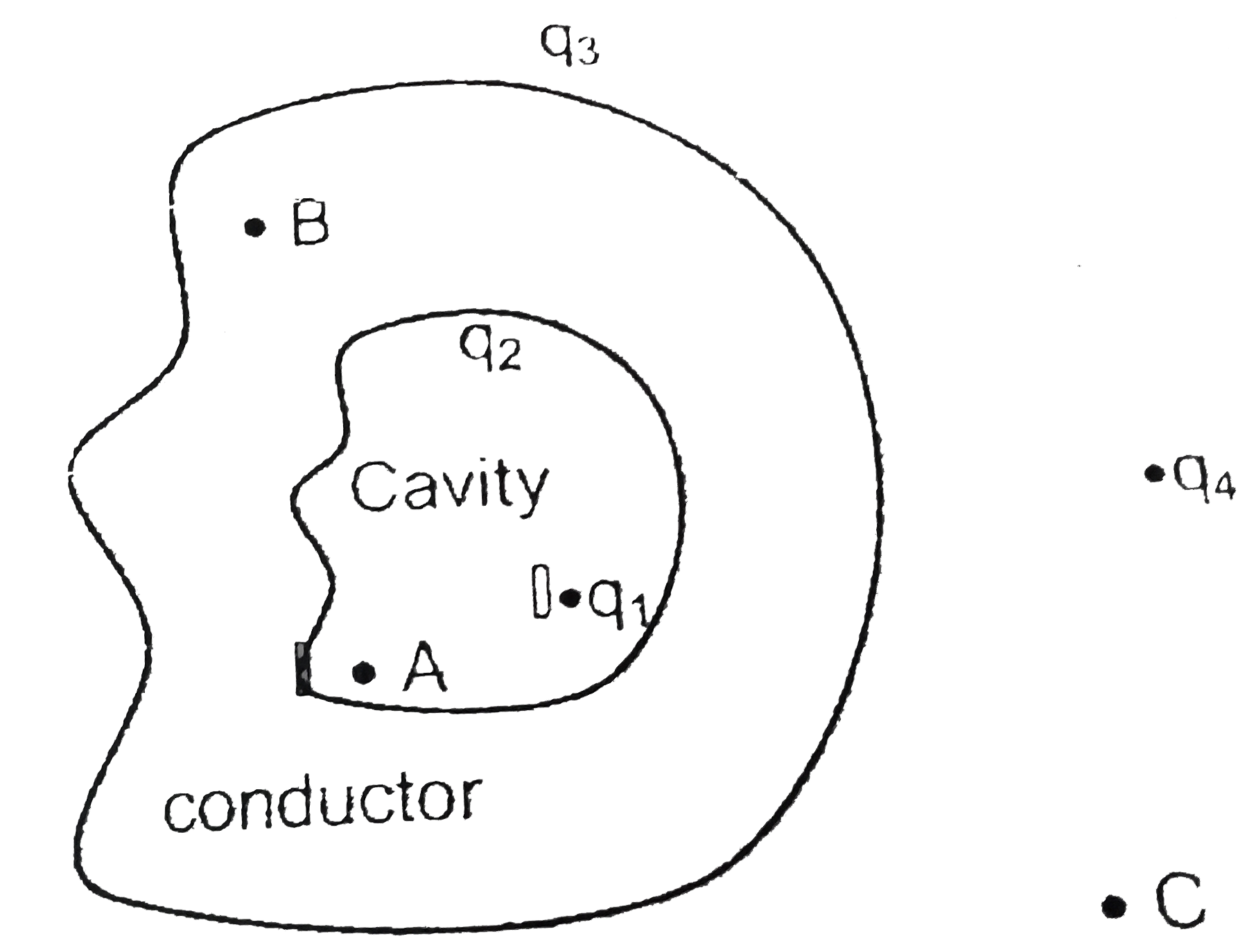
We have a fixed conductor having a cavity inside. There is a point charge q1 kept inside the cavity charge appearing at the inner surface of the cavity is q2. Charge appearing at outer surface of conductor is q3 and there lies another point charge q4 out side the conductor. Whole situation is shown in figure. q4. is held stationary by applying an external force →F0 on it. Three points A, B and C are shown. Answer the following two questions.
Q. If keeping the magnitude and nature of q1 fixed position of q1 is changed inside the cavity. Then choose the correct option(s)View SolutionA positive charge q of mass m is projected , a very large distance , toward a fixed non-conducting sphere having Q charge uniformly distributed inside it, as shown in figure. If the charge q just grazes the sphere , then the speed of projection u is κ=(14πε0).
_PHY_E01_008_Q01.png) View Solution
View Solution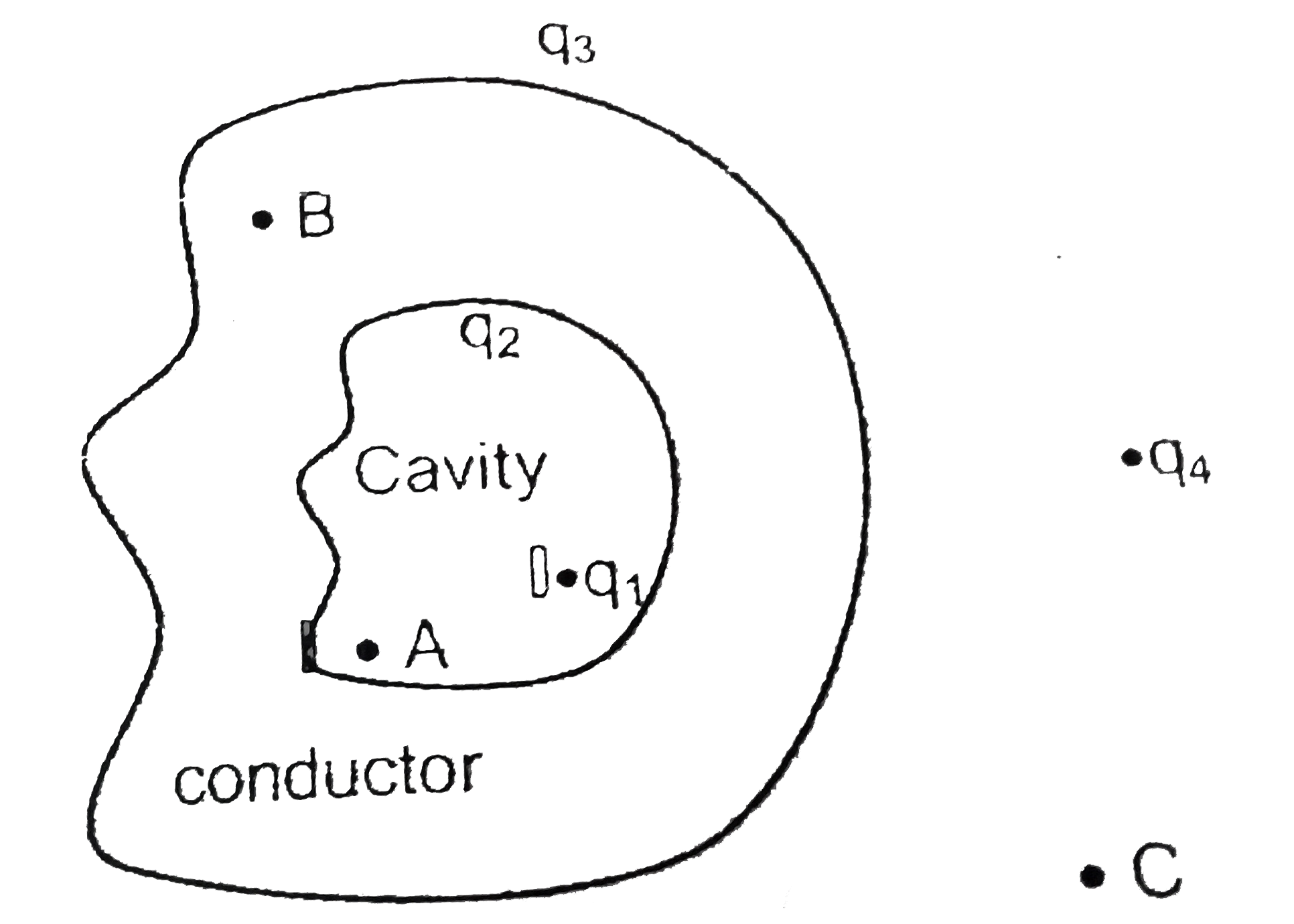
We have a fixed conductor having a cavity inside. There is a point charge q1 kept inside the cavity charge appearing at the inner surface of the cavity is q2. Charge appearing at outer surface of conductor is q3 and there lies another point charge q4 out side the conductor. Whole situation is shown in figure. q4. is held stationary by applying an external force →F0 on it. Three points A, B and C are shown. Answer the following two questions.
Q. If keeping the nature and position of q1 fixed, magnitude of q1 is changed, then choose the INCORRECT options(s)View SolutionA hollow non conducting sphere of radius R has a positive charge q uniformly distributed on its surface. The sphere starts rotating with a constant angular velocity 'ω' about an axis passing through center of sphere, as shown in the figure. Then the net magnetic field at center of the sphere is
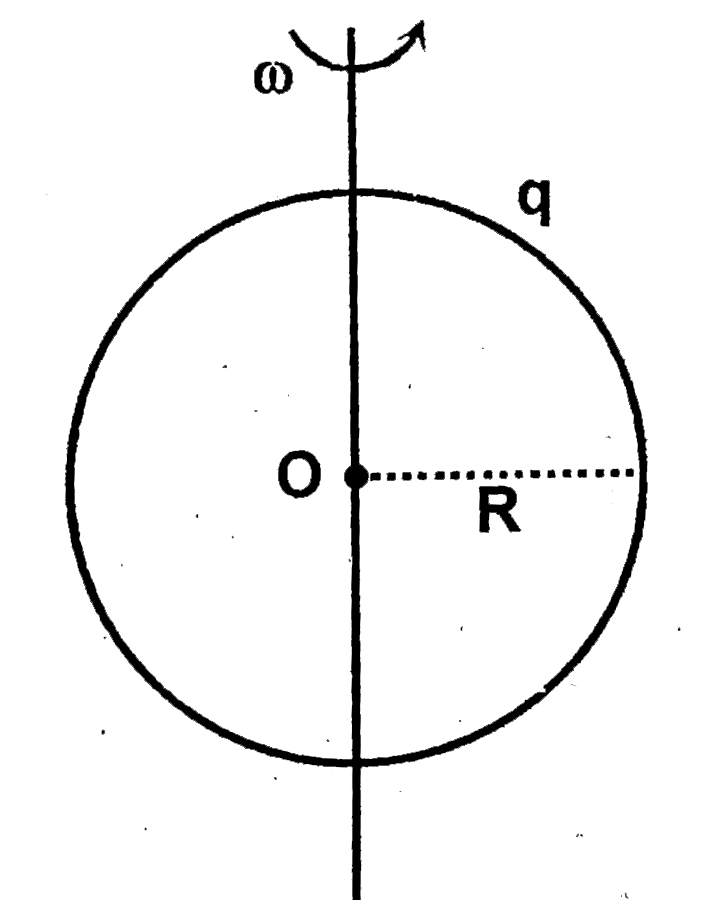 View Solution
View SolutionEach of the lettered points at the corners of the cube as shown in Fig. 1.60 represents a positive charge q moving with a velocity of magnitude v in the direction indicated. The region in the figure is in a uniform magnetic field →B, parallel to the x-axis and directed toward right. Copy the figure, find the magnitude and direction of the force on each charge and show the force in your diagram.
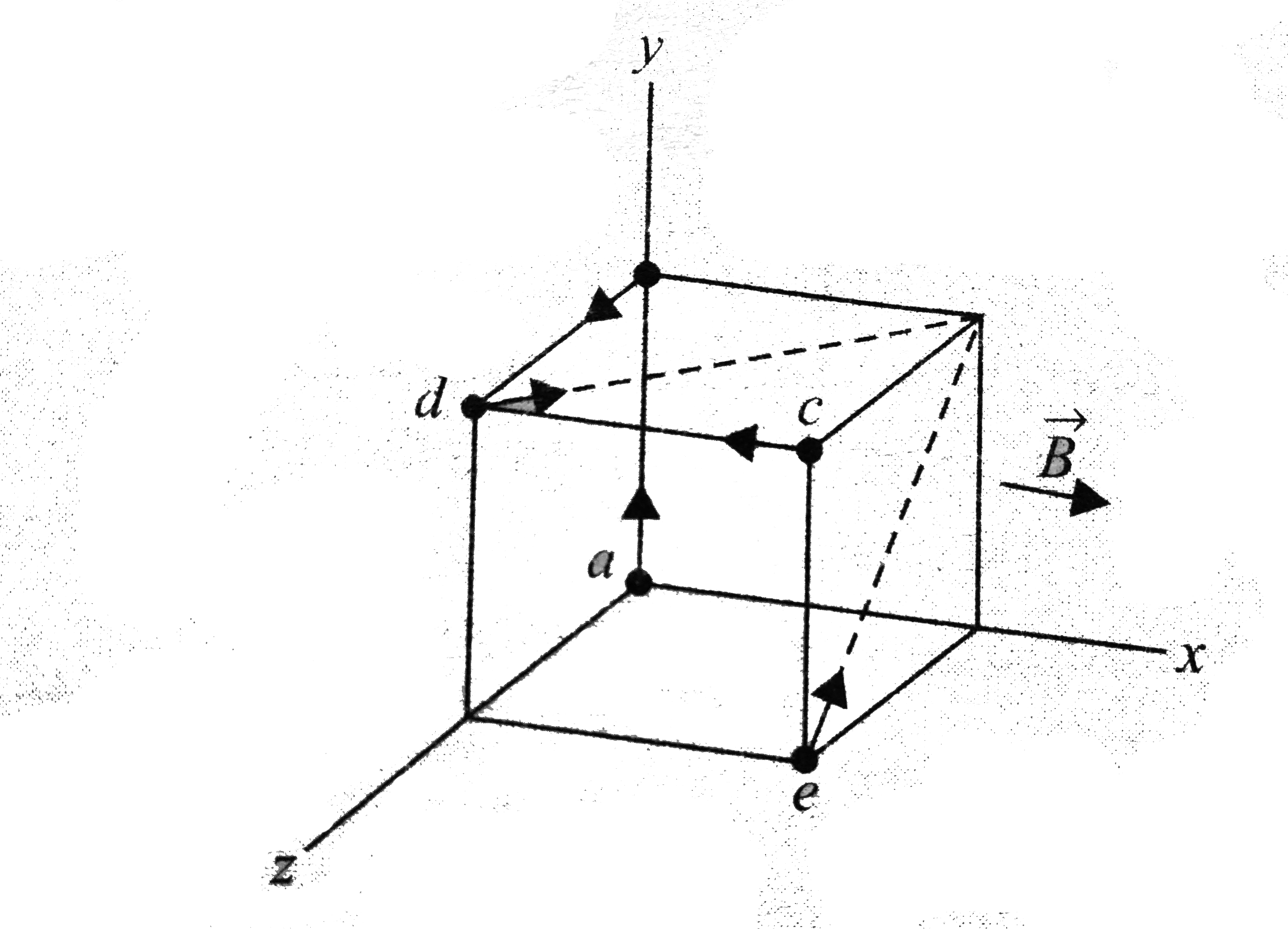 View Solution
View SolutionThree conducting spherical shells have radii (a, b, and c) such that a<b<c (Fig. 3.113). Initially, the inner shell is uncharged, the middle shell has a positive charge Q, and the outer shell has a negative charge −Q.
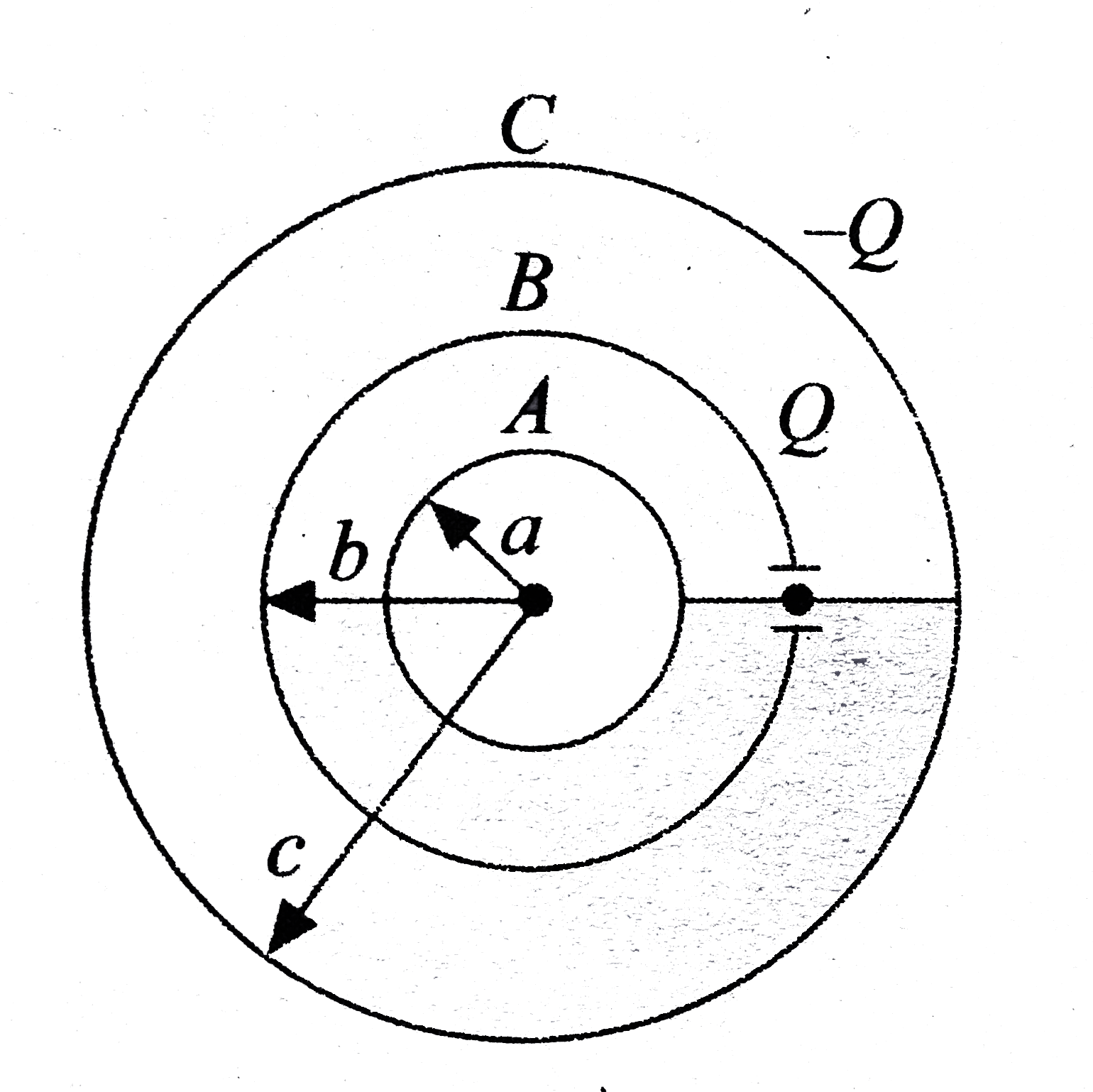 .
.
a. Find the electric potential of the three shells.
b. If the inner and outer shells are now connected by a wire that is insulated as it passes through the middle shell, what is the electric potential of each of the three shells ? Also, what is the final charge on each shell ?View SolutionEight point charges of magnitude Q are arranged to form the corners of a cube of side L. The arrangement is made in manner such that the nearest neighbour of any charge has the opposite sign. Initially, the charges are held at rest. If the system is let free to move, what happens to the arrangement? Does the cube-shape shrink or expand? Calculate the velocity ct each charge when the side-length of the cube formation changes from L to nL. Assume that the mass of each point charge is m.
View Solution

